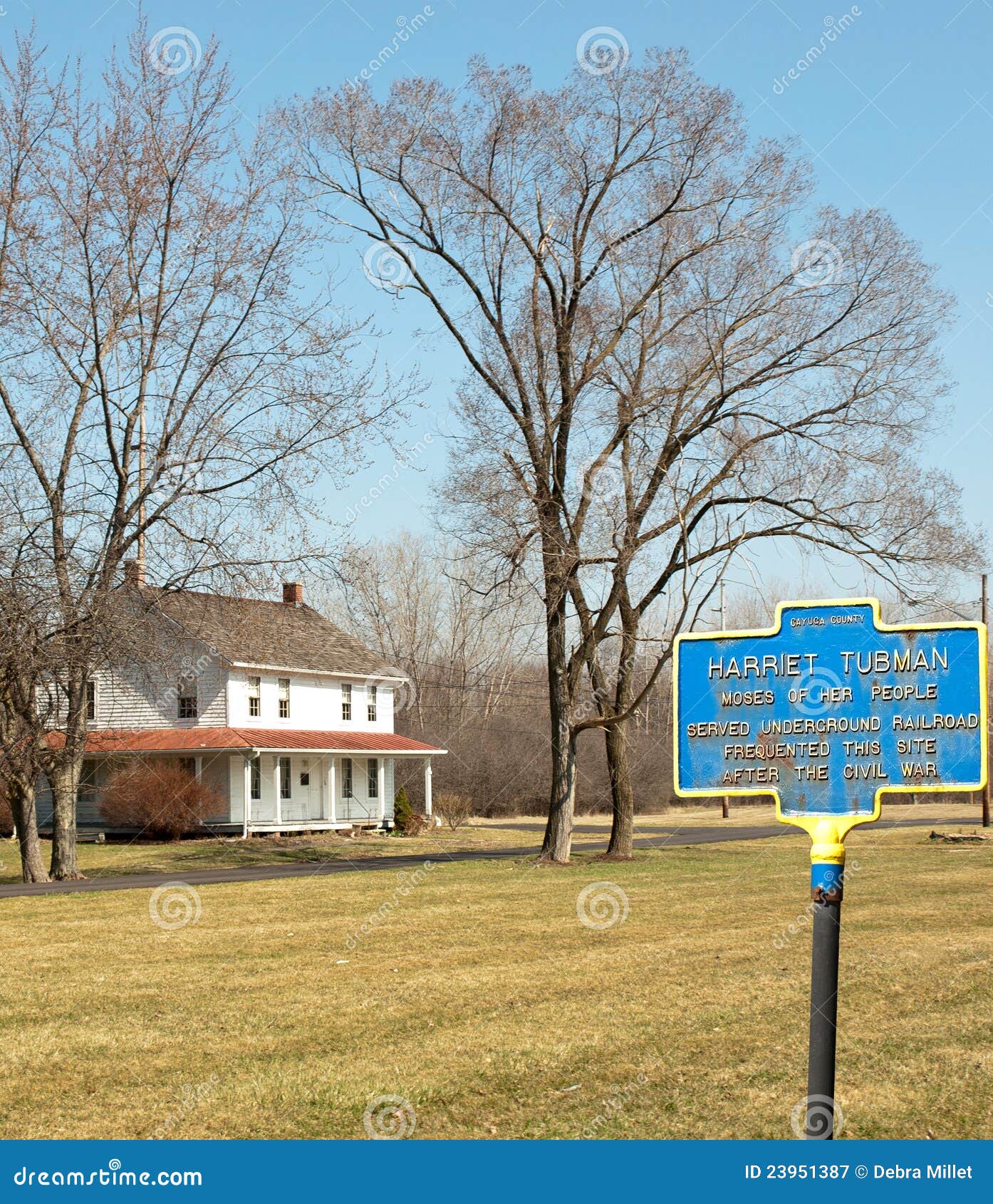Table Of Content

It’s widely reported she emancipated 300 enslaved people; however, those numbers may have been estimated and exaggerated by her biographer Sarah Bradford, since Harriet herself claimed the numbers were much lower. On September 17, 1849, Harriet, Ben and Henry escaped their Maryland plantation. With the help of the Underground Railroad, Harriet persevered and traveled 90 miles north to Pennsylvania and freedom. Harriet Tubman is credited with conducting upward of 300 enslaved people along the Underground Railroad from the American South to Canada. Myths and legends about her acts of valor on the Underground Railroad have inspired artists to retrace her courage and skill in works of art. Her desire for freedom only grew over the years, particularly after marrying John Tubman, a freedman.
lafayette street and franklin street: the center of abolitionist activism in cape may
Why Auburn, NY Should Be On Every Black Travelers Bucket List - Travel Noire
Why Auburn, NY Should Be On Every Black Travelers Bucket List.
Posted: Fri, 29 Sep 2023 07:00:00 GMT [source]
The transfer of land to a self-emancipated person was illegal under the Fugitive Slave Act. Frances Seward was breaking the law and taking a large risk to help Harriet Tubman have her own land. Frances rightly thought that since her husband, William Seward, was a powerful politician in New York State that no action would be taken against them.
Birth and family
Lafayette Street and Franklin Street became a center of abolitionist activity centered around three important buildings developed in 1846. When Harriet Tubman was a young woman, she lived with her family in a cabin on Maryland’s Eastern Shore. Archaeologists looked for the site for 20 years to no avail—but now, reports Sarah Bahr for the New York Times, the search for the Underground Railroad conductor’s long-lost home has finally come to an end. Around 1844, Harriet married John Tubman, a free Black man, and changed her last name from Ross to Tubman. The marriage was not good, and the knowledge that two of her brothers—Ben and Henry—were about to be sold provoked Harriet to plan an escape. Harriet’s desire for justice became apparent at age 12 when she spotted an overseer about to throw a heavy weight at a fugitive.
Former Ivy Ridge students and community members protest in Ogdensburg

Additional compensation from the government came several decades later in the form of a pension as the widow of Nelson Davis, a Black union soldier she married after the war rather than for her own service. After the introduction of a bill by a Republican congressmember to grant Tubman a pension, President William McKinley later signed a bill granting Tubman a pension for her role as an Army nurse. Financial issues throughout the remainder of her life did not stop Tubman from lending her service to anyone in need.
Tubman’s story speaks compassion and courage that continue to touch the lives of people. During the American Civil War, she served as an armed scout and spy for the Union Army. In her later years, Tubman was an activist in the movement for women's suffrage. The Harriet Tubman Home, Inc., is located on 26 acres and includes four buildings.
Hill said, "Strawberries were her favorite dessert, so we found strawberry seeds all over the property, and blue and white china, which is so unlike Harriet for her to have this affection for these very fine things." "Playing her was tough and exhilarating," Erivo told correspondent Martha Teichner. "I saw her as a young woman who had a force of will that was almost unbreakable. And she was a superhero because of that." A new film, "Harriet," starring Cynthia Erivo, is meant to flesh out the Wikipedia entry of Tubman's life story. Several historic figures critical to the fight against slavery spent their summers in Cape May.
Harriet Tubman commemorative coins available for preorder: US Mint - USA TODAY
Harriet Tubman commemorative coins available for preorder: US Mint.
Posted: Thu, 04 Jan 2024 08:00:00 GMT [source]
Share Your Story
Roughly half the tour is a decent-led talk about the life of Harriet Tubman in the small visitor center and museum. If your guide is anything like mine, you’ll be in for a treat as he did an absolutely amazing job of bringing Tubman to life and sharing her accomplishments. Tours of the site are roughly an hour long and focus on the story of Tubman’s life. While many are familiar with her name and image, few know about the many remarkable stories that made her life truly a special one.
Harriet Tubman's Civil War Service
In 1840, Harriet’s father was set free and Harriet learned that Rit’s owner’s last will had set Rit and her children, including Harriet, free. But Rit’s new owner refused to recognize the will and kept Rit, Harriet and the rest of her children in bondage. Because of Harriet, we are empowered to be bold and confident against all odds. As you reflect on Tubman’s life and legacy, share who you are because of Harriet on social media using #HiddenHerstory. The NMAAHC bridges the connection between emancipation and modern-day freedom struggles in the collection of Harriet Tubman’s personal effects.
National Historical Parks

Best known as the enslaved woman who brought emancipation to anyone who crossed her path, the legacy of Harriet Tubman’s lifework has inspired countless people across generations and geographic locations. Tubman was born into chattel slavery as Araminta “Minty” Ross in Dorchester County, Maryland, around 1822. Tubman was put into labor at an early age, and by the age of ten, she was hired out as a woodcutter, pest trapper and field worker. She preferred these jobs over domestic tasks in the “big house” under the scrutiny of her white mistress. At age twelve, her intervention in a violent exchange between an overseer and a fugitive slave left her with substantial injuries. Despite her renown and her heroism, Tubman was only paid $200 for the entirety of her service—less than half of what her white male counterparts received monthly.
In 1896, on the land adjacent to her home, Harriet’s open-door policy flowered into the Harriet Tubman Home for the Aged and Indigent Colored People, where she spent her remaining years until her death in 1913. This home, located in Auburn, New York, a city about an hour outside of Syracuse and near Seneca Falls—the recognized birthplace of American feminism and women’s rights—became a site of pilgrimage for African Americans. Harriet Tubman would never have a lot of money, especially since she was starting with very little. She also had a generous nature and would help her family, friends, and causes financially. She would tour around telling her story and speaking about the injustices of slavery.
Harriet Tubman purchased the farm at 182 South Street for $1,200, with $25 down. The rural setting would be more familiar to Harriet and her family from their days in Maryland and would be more appealing than a town lot. At the time of purchase, the farm included a wood-frame farmhouse on a fieldstone foundation, measuring 22 by 28 feet, facing the plank road and probably with a gable front. These buildings could have dated back to 1840 or may have been built after 1853. Harriet Tubman continued her devotion to supporting others by opening her home on the farm to let people stay, specifically those people who had suffered the most under slavery and war. Harriet Tubman welcomed many people into her home, including orphans, people who were disabled, and anyone too old to work and support themselves.
Tubman became a co-founding member of the National Association of Colored Women that demanded equality and suffrage for African American women. After 1869, Harriet married Civil War veteran Nelson Davis, and they adopted their daugher Gertie. On March 10, 1913, Harriet Tubman died of pneumonia and was buried in Fort Hill Cemetery in Auburn.Throughout her life, Harriet Tubman was a fighter. Aburi, Ghana features a statue of Tubman, and her image appeared on U.S. postage stamps.
Tubman remembered the emotional pain being separated from her family, which she never wanted to experience again. Through her friendship with fellow abolitionists such as Frederick Douglass, Tubman created her own network within the Underground Railroad. After a decade as a conductor, Tubman was called to action when the American Civil War began in 1861. She proved herself resourceful as a nurse, and she treated Union soldiers and fugitive African Americans alike using the medicinal value of native plants, a skill she learned as a young, enslaved woman working in the woods.
She continued working as a suffragist and worked all her life to care for others who were unable to care for themselves. Harriet Tubman emancipated herself and escaped to freedom at age 27, then guided dozens of freedom seekers on the Underground Railroad. Her parents were manumitted and old so they did not run the risk of being returned.

No comments:
Post a Comment